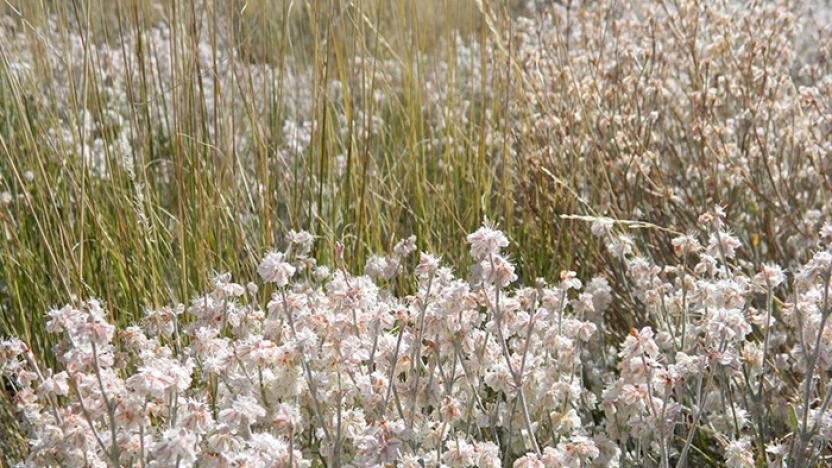
Science Shorts
This Month's Spotlight: Native Buckwheats
by Julie Grialou, our Conservation Biologist
Are you one of the many non-botanists who don't pay much attention to smaller plants and those that don’t have showy flowers? I have to admit that I am one of those people, but I’m trying to learn more about the diversity of plants we have here in the Methow, especially in the shrub-steppe. So, I’m going to pass on what I’ve learned about native buckwheat species (Eriogonum spp.), which grow in our shrub-steppe habitats. Maybe you’ll want to go take a walk and see what buckwheat species you can find.
We have 8 buckwheat species that occur in the lowlands of the Methow Valley. These include:
E. compositum (northern buckwheat, arrowleaf buckwheat)
E. elatum (rush buckwheat, tall buckwheat)
E. ovalifolium (cushion buckwheat, oval-leaved buckwheat)
E. strictum (strick buckwheat)
E. thymoides (thyme buckwheat)
E. umbellatum (sulfur buckwheat)
E. heracleoides (parsnip-flowered buckwheat, Wyeth’s buckwheat)
E. niveum (snow buckwheat)
You can find photos and descriptions of these species at The Burke Museum's terrific on-line Herbarium Image Collection.
In appearance, all buckwheats have a dense cluster of flowers at the tips of their branches. They are well-adapted to warm, dry summers such as ours, with adaptations including perennial and (often) hairy leaves that are light in color. Buckwheats are important nectar sources for butterflies and other pollinators and are a great choice to add to your garden. They also add subtle, yet varied, color, as the flowers last a long time, and turn a rusty orange, pink, or chocolate brown (depending on the species) when the seed heads develop in the fall.